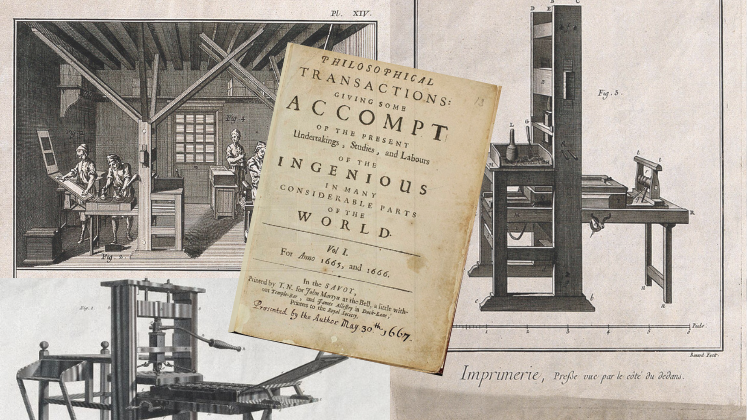Assessing the findings of a recent survey into the publishing practices of independent academic publishers, Danielle Padula, head of marketing and community development at Scholastica, finds these publishers to be moving incrementally towards fully open access models while still working to identify the options with the best long-term growth potential in the wake of recent funder initiatives, such as Plan S and the OSTP ‘Nelson Memo’.
Back in 2020, I wrote a post for this blog about how scholarly society, university press, and campus-based journal publishers were approaching the transition to open access (OA), based on the results of an inaugural Scholastica survey on “The State of Journal Production and Access” among independent academic publishers. Two years later, we’ve published the results of our second global survey on the same topic*. So, I wanted to return to consider the simple yet deceptively complex question — what’s changed?
The latest survey report released in December 2022 shows growth in society and university publishers seeking to transition journals to fully OA models and that, as in 2020, many are still working to identify viable funding options. However, consensus around the best funding approaches may be gradually forming, which could signal more OA flips and innovation to come.
Below I highlight the OA models and funding options survey participants reported focusing on as compared to 2020 and possible implications for independent publishers moving forward.
Key findings from the latest “State of Journal Production and Access” survey
For a bit of background, Scholastica ran its second “State of Journal Production and Access” survey between June and October 2022. The survey, which was open to individuals working with academic organizations that publish one or more peer-reviewed journals independently (i.e., not outsourced to a separate publisher), received 82 responses, a 30% increase from the initial survey conducted in 2020.
So how do the findings compare?
Graph 1: Is your organization utilizing the following Open Access publishing models for any of its journals?
First, looking at the OA models survey respondents reported utilizing and prioritizing in 2022, we see clear linear trends. As in 2020, fully OA publishing (where all articles are free to read immediately upon publication) was the most common OA approach, with 80% of respondents saying their organization utilizes fully-OA publishing models. The use of Green and Hybrid OA models also remained relatively the same compared to 2020, with 25% of respondents reporting their publisher uses Green OA (vs. 25% in 2020) and 31% reporting their publisher uses the Hybrid OA model (vs. 30% in 2020).
 Graph 2: In the next 3 years, how do you think your journal publishing program’s usage of the following OA models will change?
Graph 2: In the next 3 years, how do you think your journal publishing program’s usage of the following OA models will change?
As in 2020, fully-OA publishing was also a top future priority for those surveyed, with 93% reporting they planned to sustain their fully-OA models, “do a little more,” or “do much more.” The prevalence of fully-OA journals among independent academic publishers surveyed reflects industry-wide growth in fully-OA publishing over the last decade, as observed in recent reports, including the 2018 STM Report and the 2021 “STM Global Brief.”
Graph 3: On a scale of 1-5, what do you think the potential is for each of the options below to fund fully-OA journals at your organization within the next 3 years?
Turning to perceptions of the potential for different fully-OA journal funding options, we also see continuing trends with one exception. Like in 2020, the majority of respondents rated institutional subsidies and grants as having high fully-OA journal funding potential over the next three years, with 66% selecting “some” or “very high” potential for institutional subsidies and 55% selecting “some” or “very high” potential for grants. And, as in 2020, opinions on the potential of APCs were pretty evenly split, with 48% rating APCs as having “low” or “no” potential and 42% rating APCs as having “some” or “high” potential. The lowest-rated options were also, once again, Transformative Agreements (TAs), advertising, and submission fees.
However, the perceived potential of “cooperative infrastructure and funding model(s)” was lower than before. Less than half of respondents (47%) rated that option as having “some” or “very high” potential in 2022 versus 54% in 2020. It’s a very subtle difference that may or may not have future implications—only time will tell. And, arguably, the deciding factor for publishers considering OA funding approaches will be time. With the launch of OA initiatives like Plan S and the White House OSTP “Nelson Memo,” as well as shows of support from scholarly communication stakeholders like the March 3rd “IPLC Letter to the Office of Science & Technology Policy,” pressure is mounting on many to devise a plan for zero-embargo publishing, as discussed in depth in the August issue of Clarke & Esposito’s “The Brief“. In the absence of existing cooperative infrastructures to join, grants and subsidies may be the fastest way to get a foot in the door. This could create space for new cooperative infrastructure program development, so it wouldn’t necessarily signal a departure from that option.
Despite initiatives like the Transformative Agreement Toolkit released in 2019, following the “Society Publishers Accelerating Open Access and Plan S” (SPA-OPS) project, the latest survey suggests interest in TA development among independent publishers may remain limited. Perhaps this is in response to challenges inherent in securing partners and actually transforming such models to fully OA. The question remains—where will the final funding come from?
Back to the starting survey: slow and steady in the OA race
Overall, there’s no question that society and university publishers are progressing in the race to OA. It appears they’re just doing so at a slow and steady pace, likely to avoid stumbling over ongoing sustainability challenges, as revealed in Part 1 of “The OA Diamond Journals Study” from cOAlition S, based on a survey of 1,619 fully-OA journals. Respondents to that survey reported mixed degrees of OA publishing program sustainability, with a little over 40% breaking even and 25% operating at a loss.
Recent advances such as new Subscribe to Open (S2O) models from the International Water Association (IWA Publishing) and others, as well as the launch of the MIT Shift+OPEN initiative with initial backing from the Arcadia Fund, show that independent publishers are indeed identifying viable non-profit funding partnerships and making their way toward OA. In a recent Scholastica blog series, many independent publishers also cited transitioning to OA as one of the biggest publishing opportunities in 2023, suggesting the future is bright.
*A note on the survey: Scholastica recognises that this survey might not be wholly representative of the society and university publishing community. In subsequent surveys, we would aim to have a broader respondent pool. While acknowledging these limitations, we hope the outcomes of this survey will be of value to the community. The 2022 “State of Journal Production and Access” survey report and full data set are available for direct download here.
The content generated on this blog is for information purposes only. This Article gives the views and opinions of the authors and does not reflect the views and opinions of the Impact of Social Science blog (the blog), nor of the London School of Economics and Political Science. Please review our comments policy if you have any concerns on posting a comment below.
You can read all of Danielle’s posts for the LSE Impact Blog here.
Featured image Credit: Gaelle Marcel via Unsplash.









